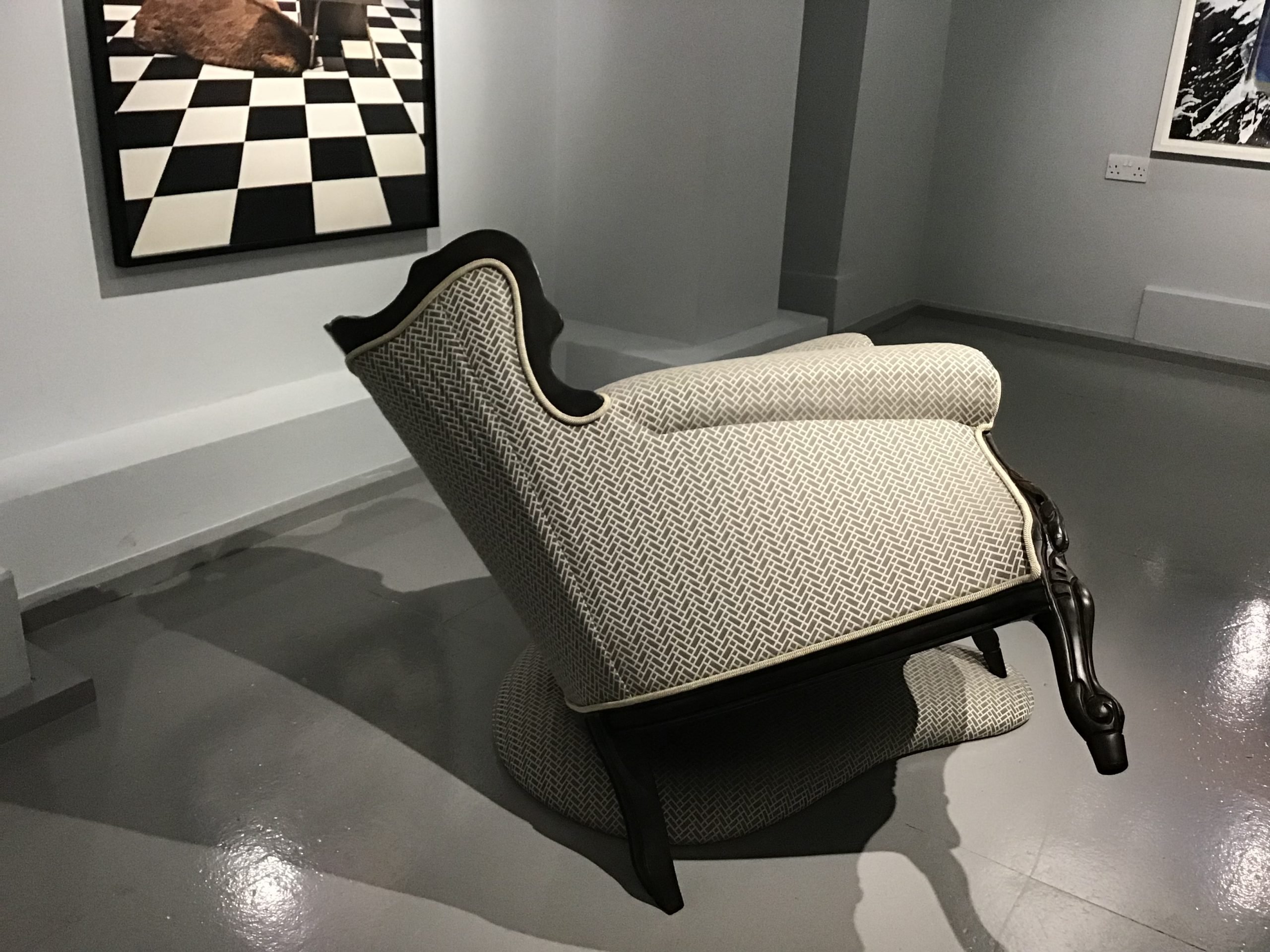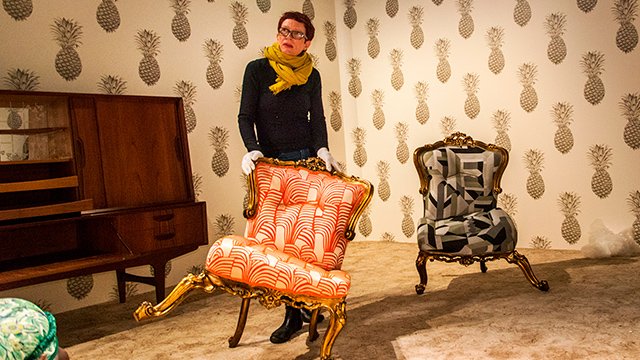Armchairs and sofas spill into their surroundings, furniture is deformed by tumorous growths, reinvented using taxidermy or masterful tricks of balance and perspective. In Nina Saunders’ work, domestic objects and settings are revisited with uncanny, often disquieting results. As familiar ground drips away or melts into something different, spectators are forced to look anew at the world around them.
Saunders was born in Denmark and studied at Central St. Martin’s College of Art and Design in London, where she now lives and works. Her first furniture-based piece dates from 1989; intrigued by furniture’s expressive potential, she was encouraged by viewer’s reactions to the work. Many of her pieces start out as discarded chairs, often sourced from auctions, second-hand stores or even street corners. As the artist explains, “I like using things that already have a story. I love stories.”
To Saunders, domestic objects and our relationship with them raise myriad questions relating to behaviour, class and perception. She enjoys manipulating the everyday and exploring the ways in which our bodies relate to furniture even before our minds can stir into action. “My work is kind of confrontational and it always has been,” says the artist. Political and social concerns underpin many of her pieces, which tread a delicate line between humour and dark observation. Her retrospective show at the KUNSTEN Museum of Modern Art in Aalborg, Denmark (2017), for example, featured pieces dealing with conflict and the plight of refugees.
Since 1992, Saunders has hosted over 30 individual presentations, including at prestigious museum venues. She has created artworks for the Hermes flagship stores in New York, Los Angeles and Dubai, and was featured in the Venice Biennale 2009. Saunders has also created public artworks for locations in Denmark, Sweden and UK, and her pieces form part of the permanent collections at the Malmö Konstmuseum in Sweden and the Skive Kunstmuseum in Denmark, as well as the Hayward Gallery, Saatchi Collection and Victoria and Albert Museum, all in London.



